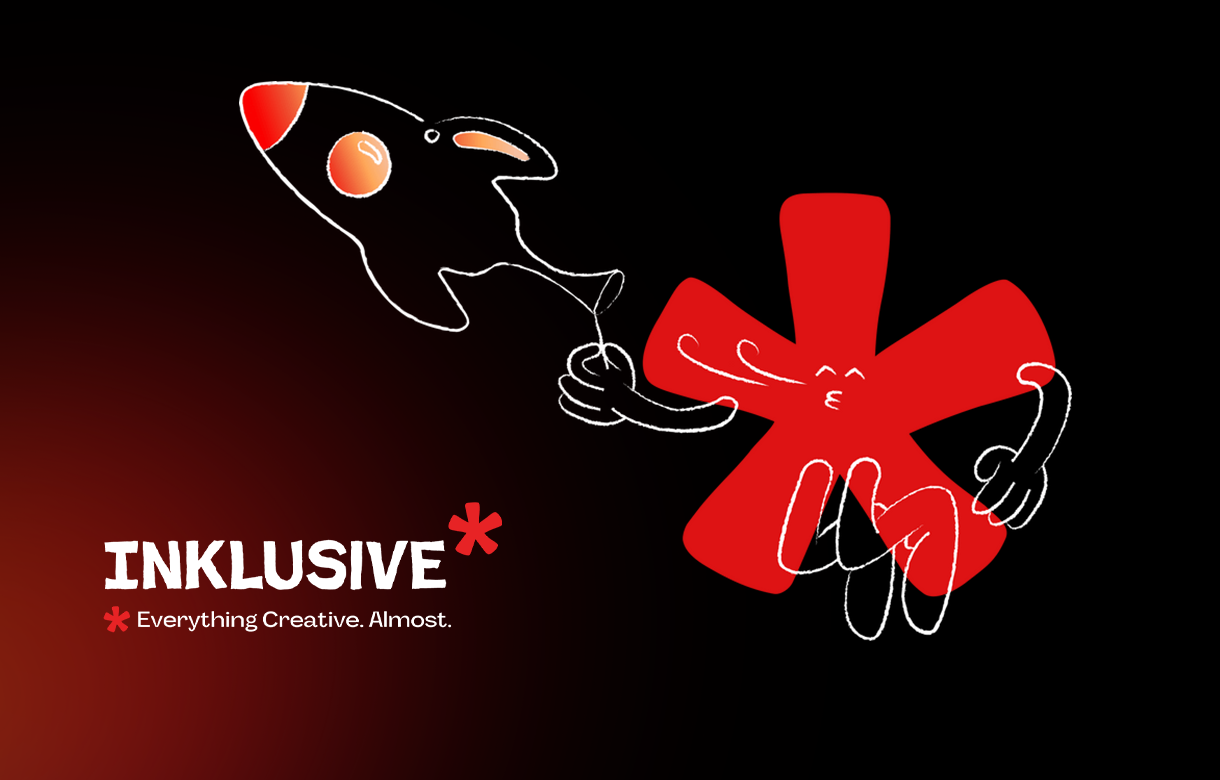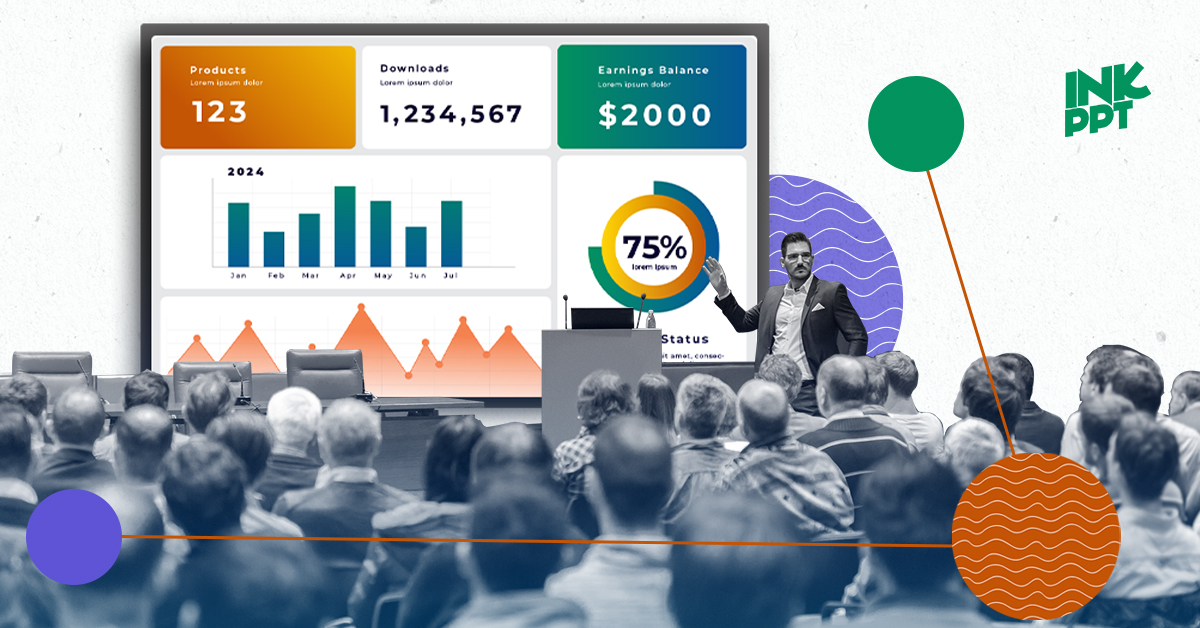PresentationPanda.com has officially joined forces with INK PPT. As part of this integration, we're dedicated to building upon the rich legacy of valuable content that PresentationPanda.com has provided over the years. Our blog is evolving to offer deeper insights, comprehensive guides, and innovative strategies aimed at elevating your presentation skills.
At INK PPT, our commitment is clear: to enhance your ability to create more engaging and impactful presentations. We're here to empower you with the tools and knowledge necessary to captivate your audience and deliver outstanding presentations. Expect expert tips, creative ideas, and practical advice that will help you elevate your presentation game to new heights.
Stay tuned as we embark on this journey together. Get ready to explore a wealth of resources designed to support your professional growth and make your presentations truly shine. Join us as we redefine what it means to deliver compelling and effective presentations in today's competitive landscape.
Introduction
In today’s fast-paced business environment, the ability to deliver compelling presentations is indispensable for professionals in every sector. Whether you're pitching ideas, conducting training sessions, or leading seminars, mastering effective presentation skills can elevate your impact and success. This comprehensive guide delves into essential strategies and design principles tailored to enhance your PowerPoint presentations. From crafting engaging content to utilizing visual elements strategically, each aspect is geared towards capturing and informing your audience effectively. By implementing these techniques, you'll not only strengthen your ability to communicate key messages but also leave a lasting impression on your listeners. Explore the following sections to discover how meticulous planning, creative design, and confident delivery can transform your presentations into powerful tools for persuasion and engagement.
Understanding Presentation Strategies
Effective presentation strategies are fundamental to delivering impactful messages and achieving desired outcomes. Whether you're pitching a new idea, training employees, or delivering a keynote address, the success of your presentation hinges on careful planning and a deep understanding of your audience.
1. Meticulous Planning: Planning is the cornerstone of any successful presentation. It involves more than just creating slides; it requires a strategic approach to organizing your thoughts and information. Begin by defining the purpose of your presentation. Are you informing, persuading, or educating your audience? Clarifying your objectives helps you stay focused and ensures your content remains relevant throughout.
2. Clear Objectives: Each presentation should have clear, measurable objectives that guide its development. Consider what you want your audience to know, feel, or do after your presentation. This clarity not only shapes your content but also helps you gauge the effectiveness of your delivery. For instance, if you're aiming to convince stakeholders to invest in a new project, your objectives might include presenting compelling data and addressing potential concerns.
3. Understanding Audience Needs: Your audience is at the heart of your presentation. Conduct thorough audience analysis to identify their knowledge level, interests, and expectations. Tailor your content to resonate with their preferences and address their concerns. For example, if presenting to a technical team, focus on detailed data and specifications. Conversely, if presenting to executives, emphasize strategic insights and business impact.
4. Tailoring Content for Engagement: Engaging presentations are not just about delivering information but creating an experience that captivates your audience. Structure your presentation to maintain interest and facilitate understanding. Use storytelling techniques, compelling visuals, and interactive elements to reinforce key messages and keep your audience engaged from start to finish.
5. Structuring for Maximum Impact: The structure of your presentation plays a crucial role in its effectiveness. Begin with a compelling introduction to grab attention and set the stage for what's to come. Organize your main points logically, using transitions to guide the flow of information. Conclude with a memorable summary that reinforces your key takeaways and prompts action from your audience.
Essential PowerPoint Design Tips

Creating visually compelling PowerPoint presentations goes beyond just inserting text and images onto slides. It involves thoughtful consideration of design elements that enhance readability, convey information effectively, and captivate your audience. Here are essential tips to elevate your PowerPoint design:
1. Attention to Detail and Creativity: Effective PowerPoint design starts with attention to detail and a touch of creativity. Choose a consistent color scheme that reflects your brand or the mood of your presentation. Use colors that complement each other and ensure readability, avoiding overly bright or contrasting combinations that strain the eyes.
2. Selecting Fonts Wisely: Fonts play a crucial role in readability and visual appeal. Opt for clean, sans-serif fonts like Arial, Calibri, or Helvetica for body text, as they are easier to read on screen. Reserve decorative fonts for titles or emphasis, but use them sparingly to maintain professionalism and clarity.
3. Layout Techniques for Clarity: Organize your content logically using a clear and balanced layout. Avoid clutter by leaving ample white space around text and images. Use grids and alignment tools to maintain consistency across slides. Ensure that each slide has a clear focal point and that information flows naturally from one point to the next.
4. Effective Use of Visuals: Visuals such as charts, graphs, and infographics are powerful tools for conveying complex information quickly and clearly. Choose the appropriate type of visual representation based on the data or concepts you need to communicate. Use color strategically to highlight key data points or trends without overwhelming the audience.
5. Enhancing Visual Appeal with Graphics: Incorporate high-quality graphics and images that support your key messages and enhance understanding. Avoid generic clip art and opt for professional, relevant visuals that add value to your content. Ensure that images are properly sized and positioned to complement your text without overshadowing it.
6. Consistency in Design Elements: Maintain consistency in design elements throughout your presentation. Use the same color palette, font styles, and layout formats across slides to create a cohesive visual identity. Consistency not only improves visual appeal but also helps in reinforcing your brand or message.
7. Animation and Transitions: Use animations and slide transitions judiciously to enhance engagement and emphasize key points. Avoid excessive animations that distract from your message or make the presentation feel gimmicky. Use simple, subtle animations to reveal content gradually or to transition between slides smoothly.
8. Accessibility Considerations: Ensure your presentation is accessible to all audience members, including those with visual impairments. Use sufficient color contrast between text and background. Provide alternative text descriptions for images and graphics. Avoid relying solely on color to convey information.
Techniques for Delivering Effective Presentations

Mastering presentation delivery requires more than just creating visually appealing slides. It involves the art of engaging your audience, effectively conveying your message, and leaving a lasting impression. Here are essential techniques to enhance your presentation delivery:
1. Voice Modulation: Voice modulation adds depth and interest to your presentation. Vary your pitch, tone, and pace to emphasize key points, create suspense, or convey excitement. A monotone delivery can bore your audience, while a dynamic voice keeps them engaged and attentive. Practice speaking with clarity and confidence to enhance your vocal presence.
2. Body Language: Body language is a powerful tool for communication. Maintain good posture to project confidence and authority. Use gestures purposefully to emphasize points and convey enthusiasm. Make eye contact with different audience members to establish rapport and keep them involved. Avoid pacing or fidgeting, as it can distract from your message.
3. Engaging Storytelling: Effective presentations often revolve around compelling storytelling. Structure your presentation as a narrative with a clear beginning, middle, and end. Use anecdotes, examples, or case studies to illustrate key concepts and make them relatable to your audience. Storytelling not only captivates attention but also helps in conveying complex ideas in a memorable way.
4. Audience Interaction: Engage your audience throughout the presentation to maintain their interest and involvement. Encourage questions, polls, or interactive activities to foster two-way communication. Pause strategically after asking a question to allow for audience participation. Adjust your pace and content based on audience reactions to ensure they stay engaged.
5. Preparation and Rehearsal: Effective delivery starts with thorough preparation and rehearsal. Practice your presentation multiple times to refine your delivery and timing. Familiarize yourself with the content to speak naturally and confidently without relying heavily on notes. Rehearsing also helps in anticipating potential questions or challenges from the audience.
6. Use Visual Aids Wisely: While delivering your presentation, use visual aids such as slides, charts, or videos to support your points. However, avoid reading directly from the slides. Instead, use them as prompts to guide your discussion. Maintain eye contact with the audience while referring to visual aids to keep their attention focused on you as the presenter.
7. Handle Q&A Sessions Effectively: Prepare for the Q&A session by anticipating possible questions and formulating concise answers. Maintain composure and confidence while addressing queries from the audience. If you don’t know the answer to a question, acknowledge it gracefully and offer to follow up later. Use the Q&A session as an opportunity to reinforce key messages and clarify any doubts.
8. Adaptability and Flexibility: Be prepared to adapt to unexpected situations or changes during your presentation. Stay flexible in your approach and adjust your delivery based on audience feedback or time constraints. Remain calm and composed, demonstrating your ability to handle challenges with professionalism.
Crafting Compelling Content

In presentations, content serves as the foundation upon which your message stands. Crafting compelling content is essential for effectively communicating ideas, engaging your audience, and achieving your presentation objectives. Here’s how to create content that resonates and captivates:
1. Define Clear Objectives: Before crafting your content, clarify the objectives of your presentation. What do you want to achieve? Are you informing, persuading, or inspiring your audience? Clearly defining your goals helps in structuring your content around key messages that support your overarching purpose.
2. Develop Engaging Headlines: Headlines serve as signposts that guide your audience through your presentation. Craft clear and concise headlines that summarize the main point of each slide or section. Avoid vague titles and instead use actionable language that piques curiosity and encourages attention.
3. Structure for Clarity and Flow: Organize your content in a logical sequence that flows smoothly from one point to the next. Start with a compelling introduction that captures attention and sets the stage for what follows. Clearly outline your main points and supporting details, using transitions to connect ideas and maintain coherence.
4. Emphasize Visual and Verbal Balance: Balance text with visuals to enhance comprehension and retention. Use bullet points or short phrases to convey key information, complemented by relevant images, charts, or graphs that illustrate your points visually. Visual aids should support and reinforce your verbal message without overwhelming or distracting the audience.
5. Simplify Complex Information: Present complex information in digestible chunks to facilitate understanding. Break down concepts into manageable segments and provide context or examples to clarify abstract ideas. Use analogies, anecdotes, or case studies to make information relatable and memorable for your audience.
6. Tell a Compelling Story: Effective presentations often weave a narrative thread that connects ideas and engages emotions. Incorporate storytelling techniques to frame your content in a narrative arc with a beginning, middle, and end. Use storytelling to create a sense of urgency, evoke empathy, or illustrate the impact of your message on real-world scenarios.
7. Use Data and Evidence Strategically: Support your arguments and claims with credible data, statistics, or evidence. Use visuals such as charts or infographics to present data in a clear and compelling manner. Ensure that your sources are reliable and relevant to enhance the credibility of your presentation.
8. Encourage Audience Engagement: Engage your audience throughout the presentation by inviting questions, encouraging discussion, or incorporating interactive elements. Foster a participatory environment where audience members feel involved and invested in the topic. Address audience interests and concerns to maintain their attention and relevance.
Conclusion
Mastering presentations is a multifaceted skill that demands strategic planning, creative design, and impactful delivery. By incorporating the strategies discussed in this guide, you can enhance your ability to deliver compelling PowerPoint presentations that resonate with your audience. From meticulous content crafting to engaging audience interaction and thoughtful design choices, each element contributes to creating presentations that inspire, inform, and persuade effectively. Embrace clear objectives, employ engaging storytelling, and utilize visual aids wisely to captivate your audience from start to finish. Whether you're presenting to colleagues, clients, or stakeholders, these techniques will help you convey your message with clarity and confidence. Start implementing these proven strategies today to elevate your presentation skills and leave a lasting impression in your professional endeavors.
FAQs
What are effective presentation techniques?
Effective presentation techniques involve clear communication, audience engagement, and impactful delivery to convey your message persuasively.
How can I design compelling PowerPoint presentations?
Design compelling PowerPoint presentations by using visuals effectively, crafting clear messages, and structuring your slides to enhance understanding and engagement.
Why is presentation strategy important?
Presentation strategy helps in organizing content, engaging the audience, and achieving presentation objectives effectively.
What makes a PowerPoint presentation effective?
An effective PowerPoint presentation combines clear content, engaging visuals, and a structured flow that keeps the audience interested and informed.
How can I improve my presentation skills quickly?
You can improve your presentation skills by practicing delivery, refining slide design, and understanding your audience's needs and expectations.
Ready to elevate your presentation skills and make a lasting impact? Explore the strategies and design tips in this guide to create compelling PowerPoint presentations that captivate and inform your audience. Start implementing these techniques today to enhance your professional communication and achieve success in your presentations. Unlock the potential to inspire, persuade, and engage with confidence. Begin your journey towards mastering the art of presentations now.
For those who are hungry for more about Modern Company Profiles, Presentations for Impact and Influence? here are some other blogs that you might enjoy:











.jpg)
.jpg)

.png)

.png)

.jpg)







%20(1).jpg)


.jpg)




%20(1).png)